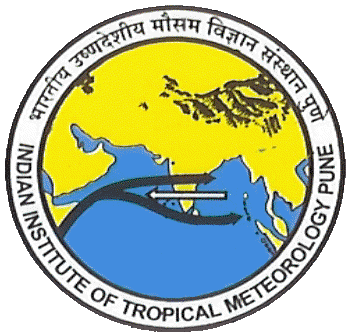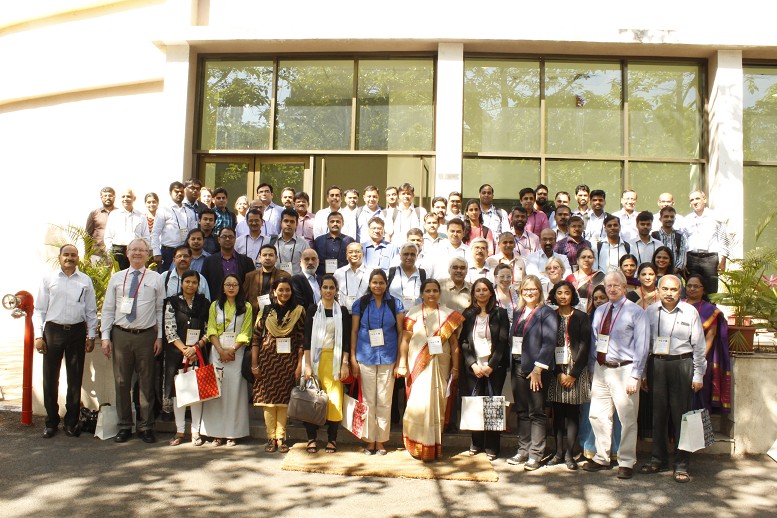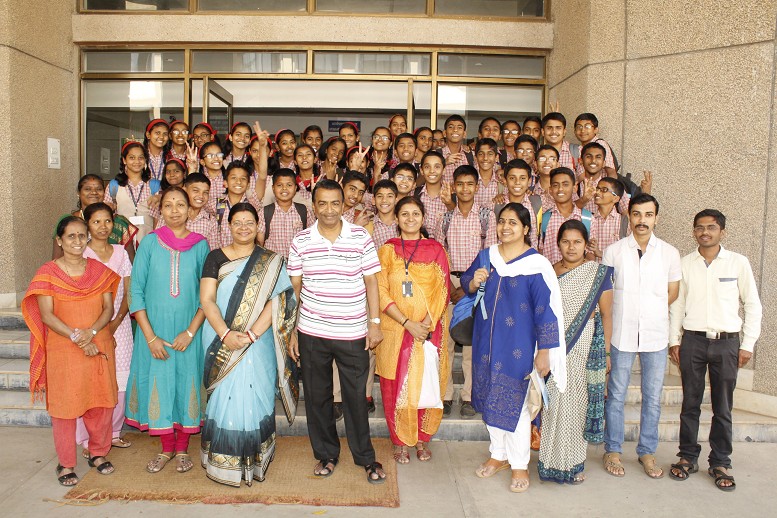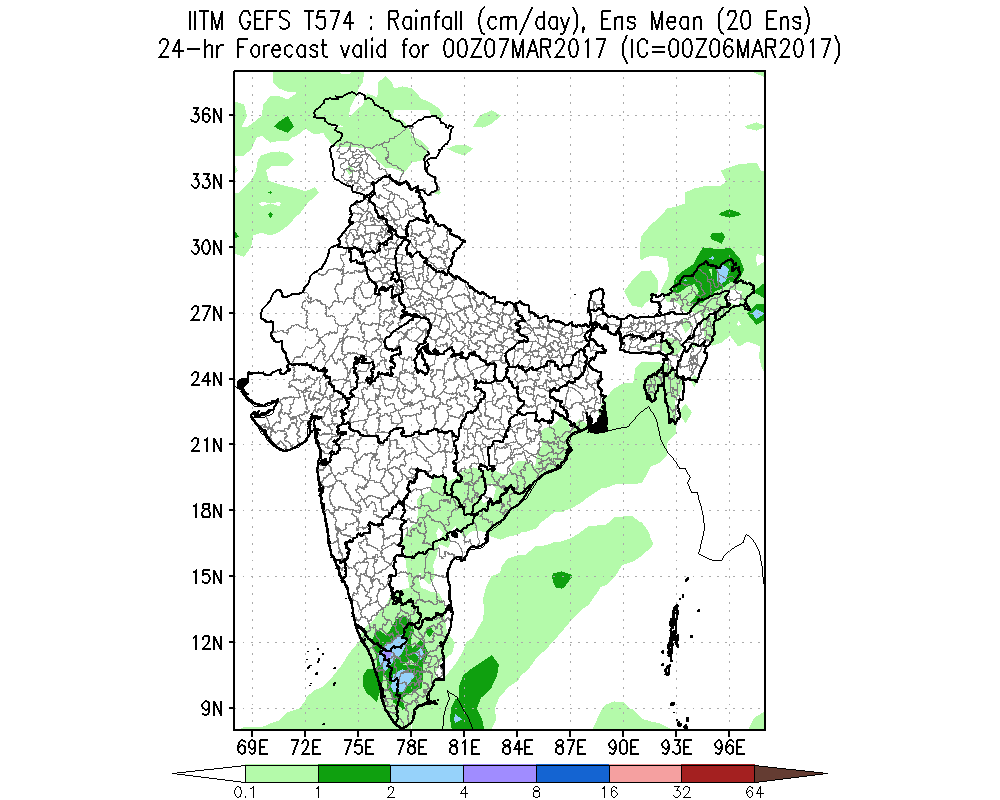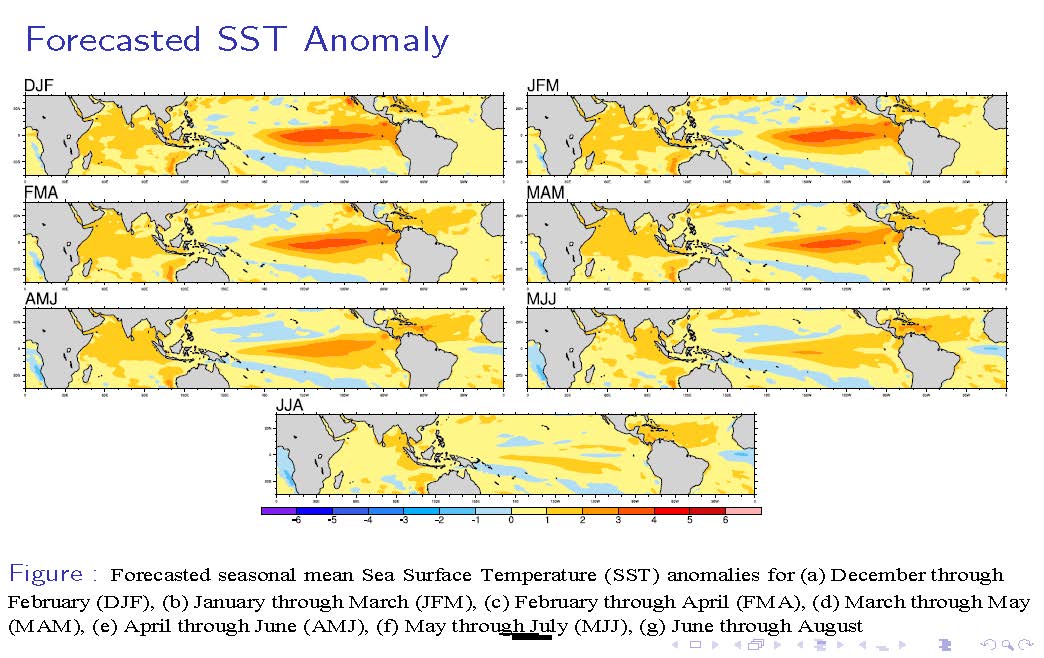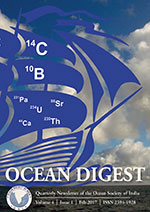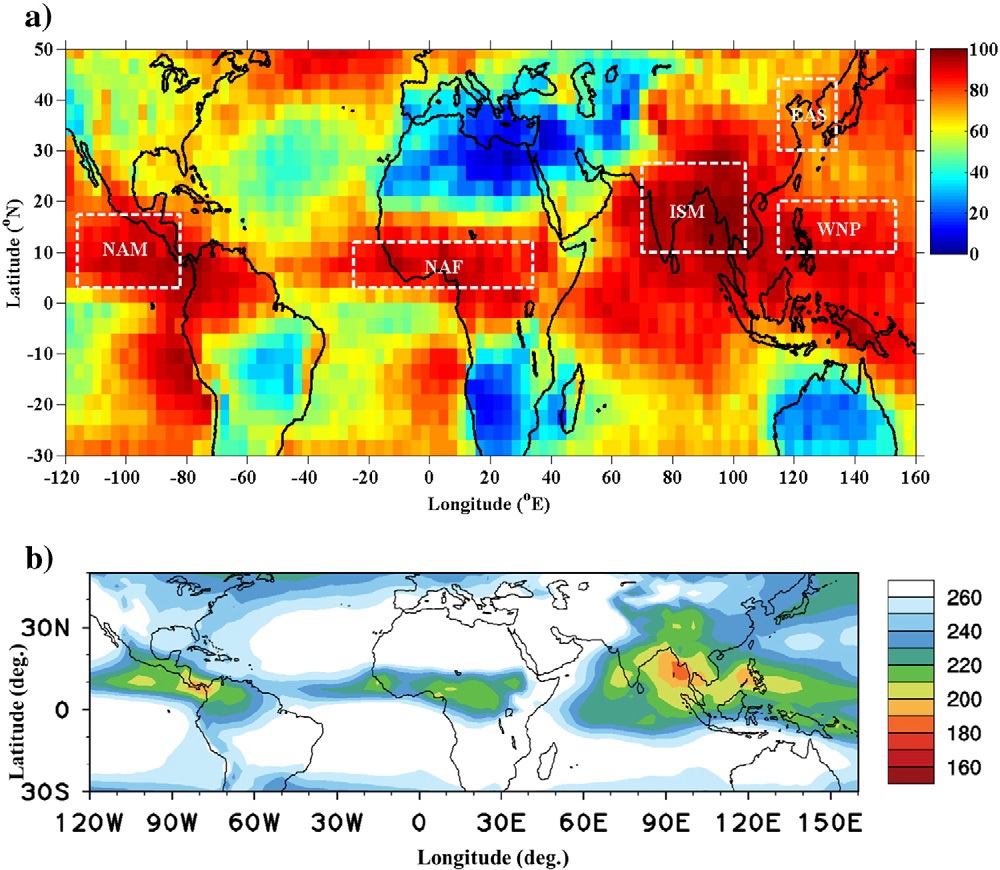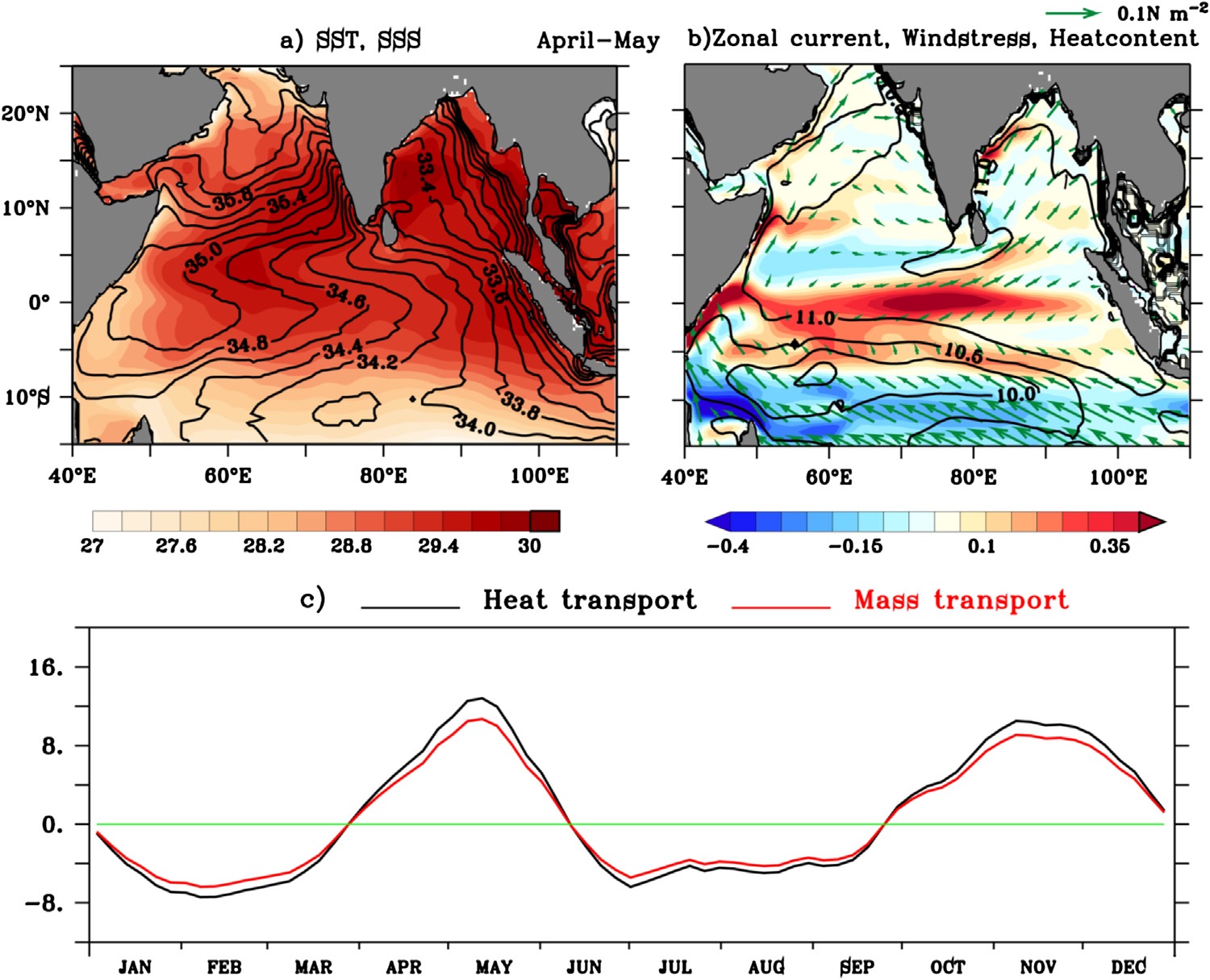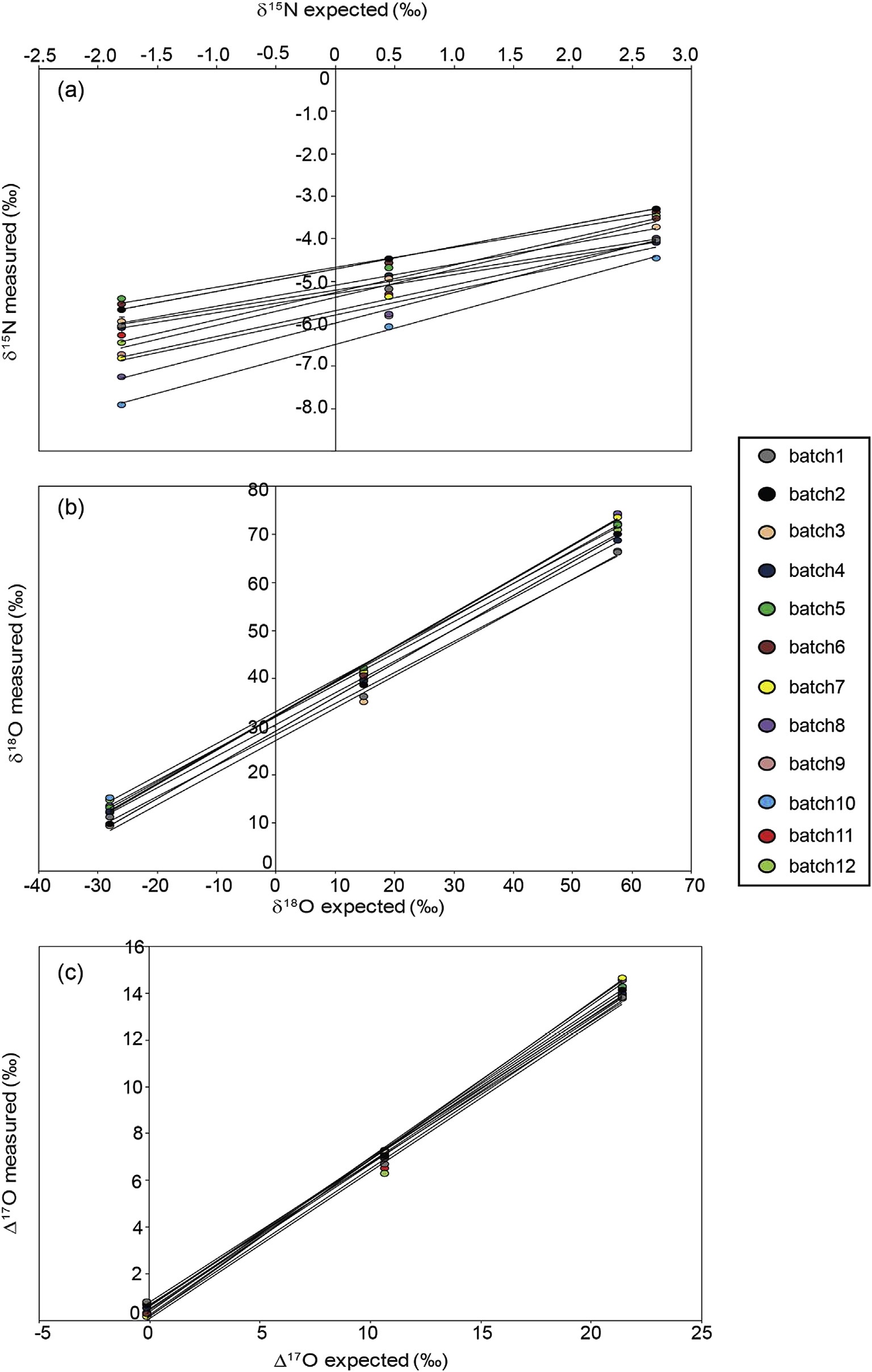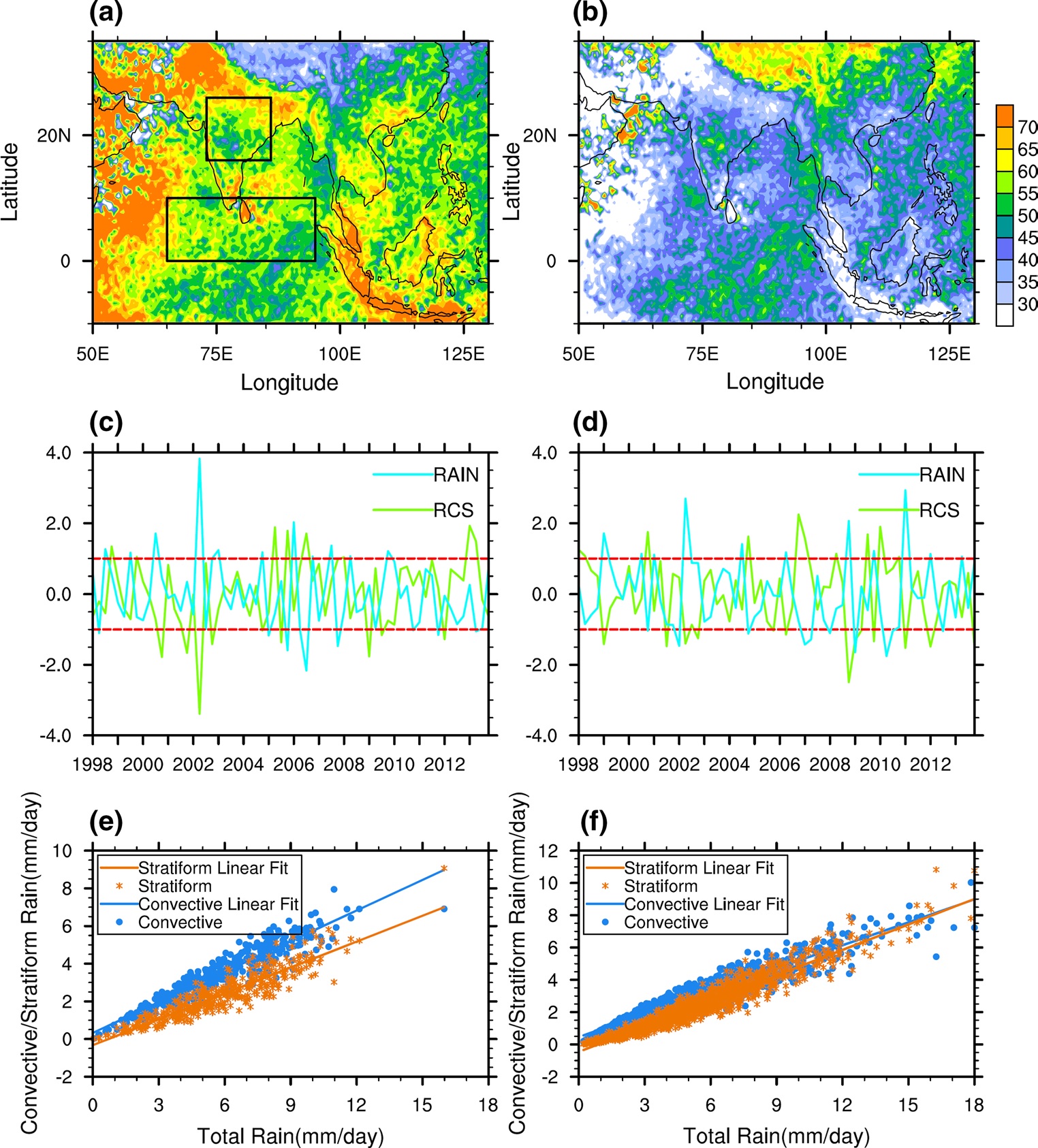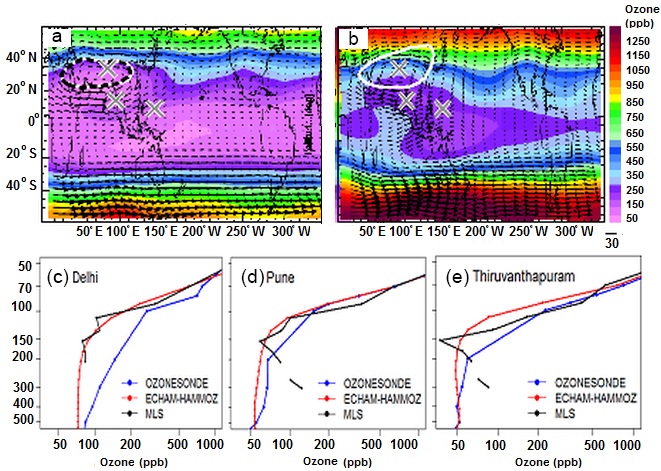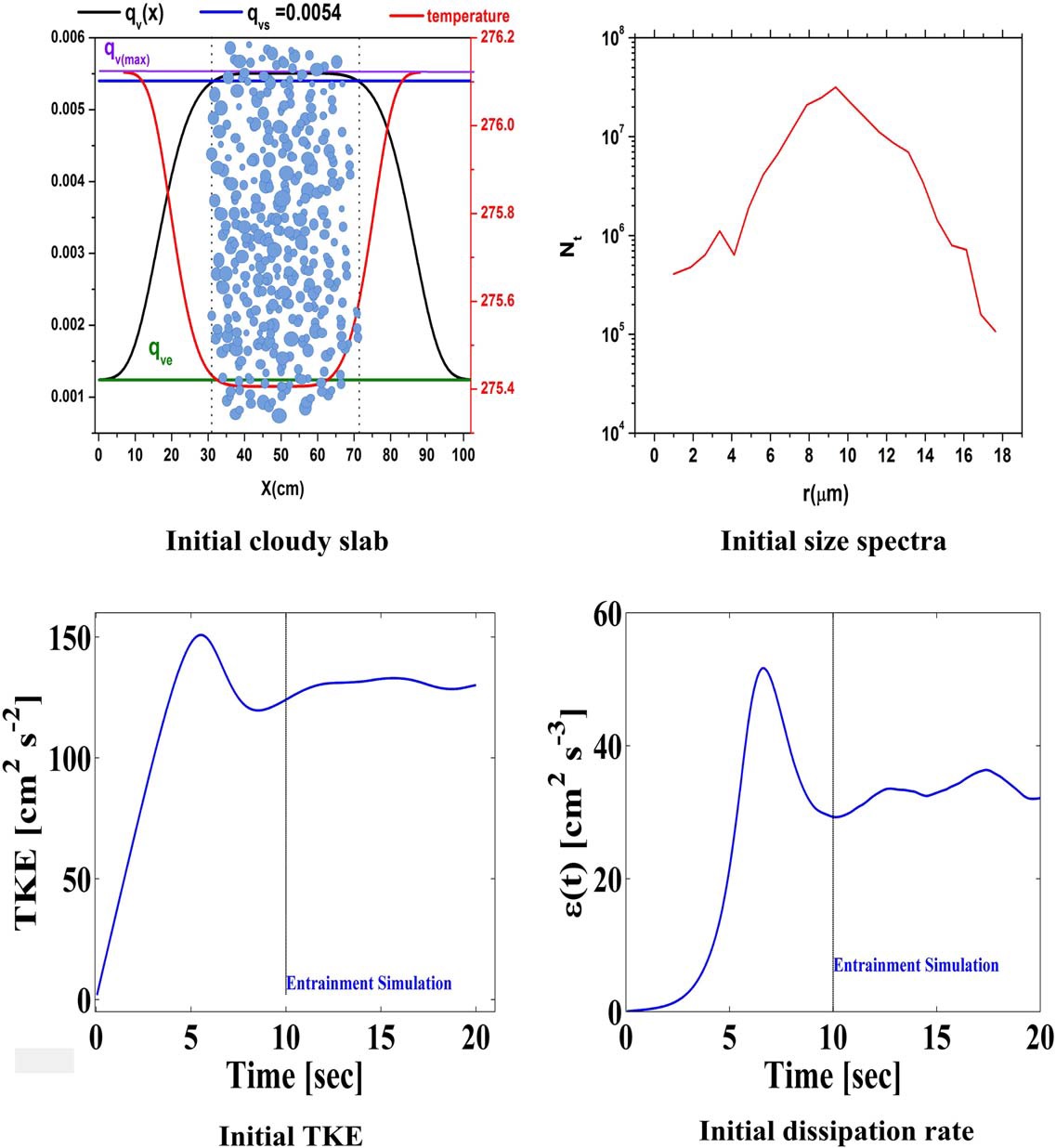IITM Publication Highlights
Breakup modes of the drops suspended in a vertical wind tunnel in presence of the horizontal electric field
|
The influence of strong horizontal electric field (EH) on different stages of deformation and eventual breakup of the large water drops of 6.6, 7.0, and 7.25mm diameter has been observed in avertical wind tunnel using high-speed photography. Dumbbell, filament, and bag modes of drop breakup areobserved when EH = 0. However, drops elongate in horizontal direction, mostly develop sharp curvature attheir ends, eject a fine jet spray of tiny droplets, and ultimately break up into several droplets in EH = 500kVm-1. Extremeelongation up to 29mm is observed for a 7.0mm diameter drop. Results suggest that theeffect of EH in final oscillation before breakup overcomes the effect of hydrodynamic and aerodynamicforces in elongating the drop. Also, no breakup of bag type is observed in EH = 500 kVm-1. Moreover, the fragments formed after the drop breakup and tiny droplets ejected by their fragments carry electrical chargesof polarity determined by the induced charge on the parent drop in EH. The significance of the results isdiscussed in modifying the drop growth and the radar echo-precipitation relationships in thunderclouds.
Read more...
(Bhalwankar R., Deshpande C.G., Kamra A.K., Journal of Geophysical Research, 122, February 2017) |
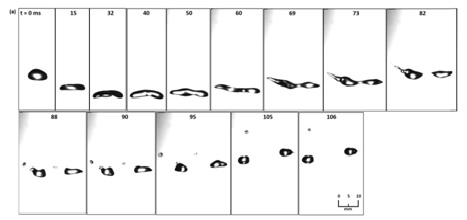 |
Effects of multilayer snow scheme on the simulation of snow: Offline Noah and coupled with NCEP CFSv2
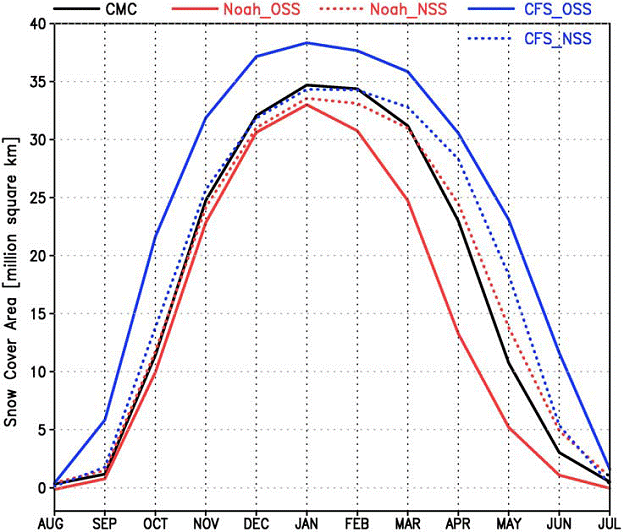 |
A multilayer snow scheme is introduced in the Climate Forecast System version 2 (CFSv2) of the NCEP. Many previous observational and modeling studies have identified Eurasian snow as one of the important predictors the Indian summer monsoon rainfall (ISMR). However, CFSv2, which is used by IITM for predicting the monsoon rainfall on sub-seasonal to seasonal time scale, had a large difficulty in simulating the mean snow over Eurasia. This is a completely in-house model development activity and shows promising results in the simulation of snow as well as ISMR. Read more... (Saha Subodh K.et al., Jr. Adv. Modeling Earth Sys., 9, January 2017,DOI:10.1002/2016MS000845, 1-20) |
Long term temperature trends at major, medium, small cities and hill stations in India during the period 1901-2013
|
In the present study, seasonal and annual mean, maximum and minimum temperature data of 36 stations for the period 1901-2013 have been used. These stations are classified into 4 groups, namely major, medium, small cities and hill stations. During the period 1901-1970, less than 50 % stations from each group showed a significant increasing trend in annual mean temperature, whereas in the recent period 1971-2013, more than 80 % stations from all the groups except small city group showed a significant increasing trend. The minimum temperature increased faster than that of the maximum temperature over major and medium cities, while maximum temperature increased faster than the minimum temperature over the small cities and hill stations. Read more... (D. R. Kothawale, N. R. Deshpande and Rupa Kumar Kolli, American Journal of Climate Change, 5, Sept. 2016) |
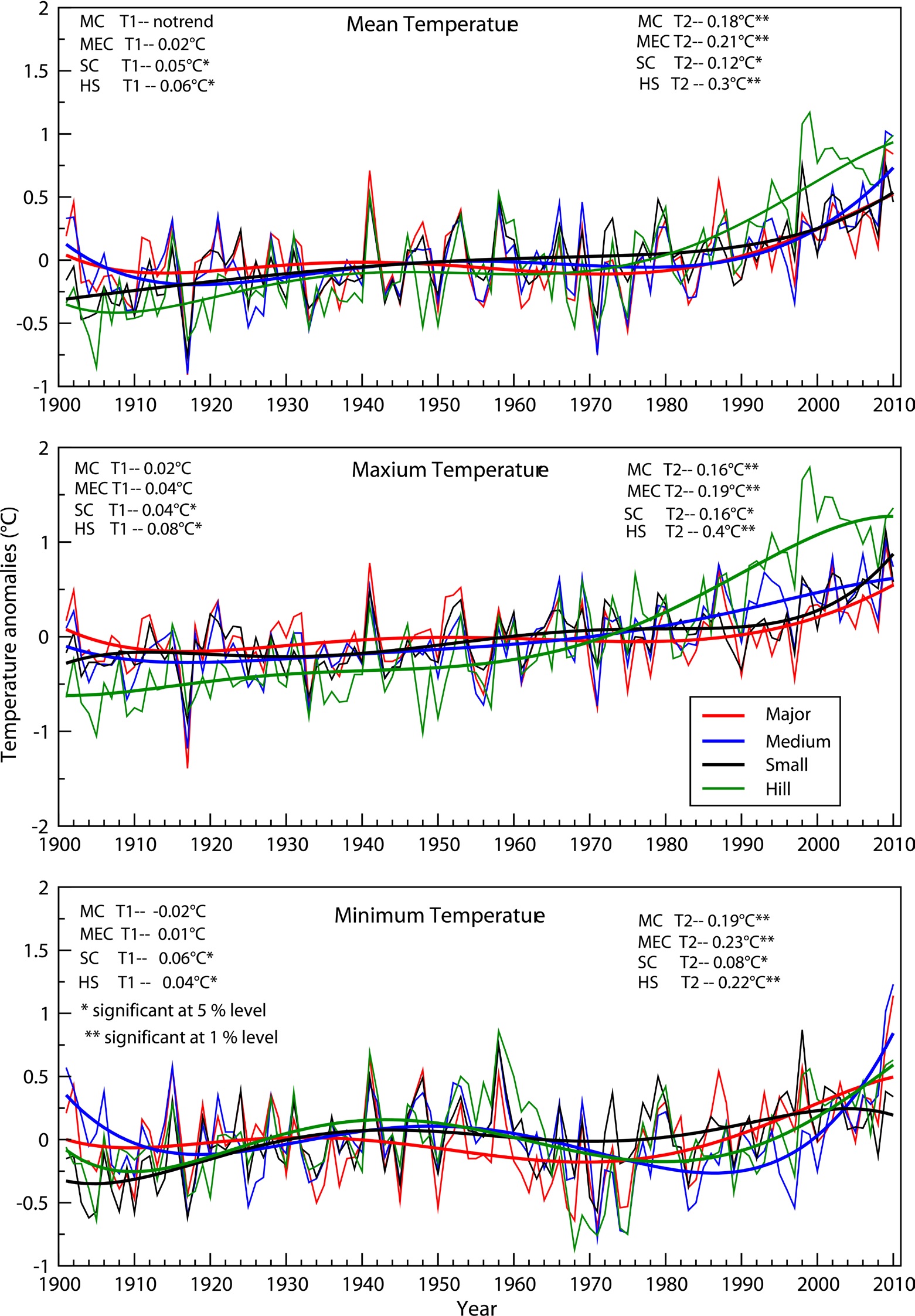 |
